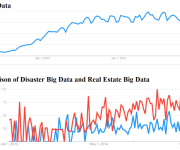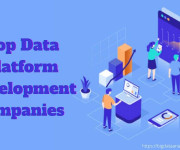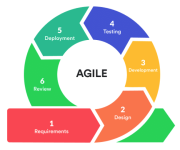The Rise of Prediction Markets in the Crypto Age
Forecasting matters more than ever in an increasingly decentralized and data-driven world. Investors try to foresee market moves, while policymakers try to gauge public sentiment; decision-making based on prediction is transformational. Prediction markets are among the most powerful and innovative tools emerging in this space. In the very fast-moving worlds of cryptocurrency sentiment, speculation, and information flow, prediction markets are finding their place as indicators of collective belief. The prediction market crypto notion is not merely disrupting conventional forecasting; rather, it is setting the framework for how we look at finance and beyond as future possibilities.
What Is A Prediction Market?
A prediction market is a place where people gamble and speculate on future developments or current happenings. The market operates just like any stock exchange, except instead of stocks being held by a company, shares in potential event outcomes are bought and sold by market participants. Each share gives the holder a piece of evidence that reflects the likelihood of an event. For example, a contract that says “Bitcoin will hit $100,000 by December 2025” may currently sell for $0.65 on some market. This price means that traders believe there is a 65 percent chance of the event happening.
And so if the prediction is correct, each share is paid out at $1; if not, it is worthless. Because of the constant buying and selling by the participants, the price fluctuates, giving a real-time assessment of crowd sentiment and expectations.
Why Prediction Markets Are Effective
Prediction markets gain their effectiveness from the so-called wisdom of the crowd—a thesis that postulates that large groups of diverse, informed individuals often make more accurate predictions than do single experts or institutions. These markets use incentives to get participants to invest in their forecasts. When one risks real capital per the chances, that person is bound to conduct research, think critically, and act rationally. Several benefits of these markets include
Financial Incentives: People want to make well-thought-out bets to earn money.
Real-Time Updates: Prices change accordingly with the newest information, making the forecasts dynamic.
Diverse Participation: Decentralization draws a mixed group of people with various viewpoints.
Reduced Bias: Being somewhat anonymous outsiders for losses and profits, emotional or ideological bias couldn’t come into play.
Blockchain and Decentralized Prediction Markets
Prediction markets—without blockchain—have existed for many years (think Intrade and PredictIt) from the Internet era onward. With the advent of blockchain, however, the paradigm has transformed for the better.
A decentralized prediction market eliminates a central authority, thereby providing transparency, security, and global reach.
Augur, Polymarket, and Gnosis are some names leading the decentralized prediction markets.
These platforms employ smart contracts—interchangeably called “native” or “atomic” contracts—to automatically resolve and distribute trades and winnings, rewarding users for providing liquidity and market information.
Some of the advantages included
Immutability: Each trade and outcome is logged on-chain and thereby transparent.
Global Access: Anyone willing to open a crypto wallet with an internet-connected device can participate.
Trustless: There’s no central authority to put trust behind; the enforcement is done automatically by smart contracts.
Token Incentives: Many platforms reward native tokens to increase participation and liquidity.
Prediction Markets in Cryptocurrency
The cryptocurrency market is the best fit for prediction markets due to its highly speculative nature, vigorous news cycles, and high community involvement. Unlike traditional finance, where one predicts interest rates, stock earnings, or some macroeconomic indicator through several layers of analysis, crypto tends to pose simpler but equally impactful questions.
Some common prediction market questions pertinent to crypto are
Will Ethereum flip Bitcoin in market cap by 2026?
Will the SEC approve a Bitcoin ETF before 2025?
Will Solana overtake Avalanche in total value locked (TVL)?
Will Dogecoin set a new record high next year?
These questions attract retail traders, institutional analysts, and developers alike. The answers are not simply a farce—they influence trading decisions, product launches, and strategies at large.
Therein lies the major traction being gained by the selective commoditization of prediction market cryptos; essentially, it is empowering anyone on earth to probe what the global crypto community ascribes to being true about the future.
Real-World Use Cases
The applicability of prediction markets has never been restrained solely by financial considerations; they are nowadays employed across sectors:
Political Forecasting
Prediction markets have forecasted the outcomes of major elections and referenda, mostly with more accuracy than conventional polls.
Scientific Research
Scientists use markets to forecast whether a particular experimental outcome, a drug approval, or a technological breakthrough will occur.
Corporate Strategy
Internal markets can also be used by companies to forecast the success of projects, deadlines for delivery, or how much a product will be adopted.
Public Policy
Governments and NGOs can use them to assess public expectations for policies such as UBI (Universal Basic Income), environmental policies, or responses to pandemics.
The common link between all such use cases is the urgent need for fast, reliable, and incentive-dependent forecasts, all of which prediction markets can uniquely provide.
Challenges and Risks
Despite the array of their promises, prediction markets are faced with some hurdles as well:
Regulatory Ambiguity: In some regions, they are considered a form of gambling or unlicensed derivatives trading.
Liquidity Issues: Thinly traded markets are subject to price manipulation.
Question Framing: Badly defined questions can cause problems as resolution arrives.
Technical Barriers: For some people, the issues of managing crypto wallets or gas fees or that DeFi has its own set of mechanics can be intimidating.
But they are expected to be solved as the UX improves and regulations mature in due course.
The Road Ahead
We are days before the mainstreaming of prediction markets. AI, blockchain interoperability, and governance structure innovations are smoothing the way for greater adoption.
Some features include:
Integration into financial dashboards for traders and analysts.
Social forecasting where users compete or cooperate.
Cross-chain markets for greater liquidity and participation.
Institutional adoption by hedge funds, think tanks, consultancies, etc.
Prediction markets, as technologies mature, could become the most trustworthy crowd-sourced insights in all domains.
Conclusion
Prediction markets are more than mere speculative playgrounds; they are becoming core facilities to navigate uncertainty in the 21st century. Given their decentralized and incentive-aligned structure, prediction markets offer an exceptional tool in spaces where conventional forecasting fares poorly—politics, science, and especially cryptocurrency.
With blockchain gradually inching deeper into the fabric of the financial system, there shall arise a growing need for these forecasting tools that offer accurate, real-time analysis. In such a world, prediction market platforms won’t be merely about wagering on outcomes but will instead become the very keel on which smart, informed decisions will be steered all along the digital expanse.
























